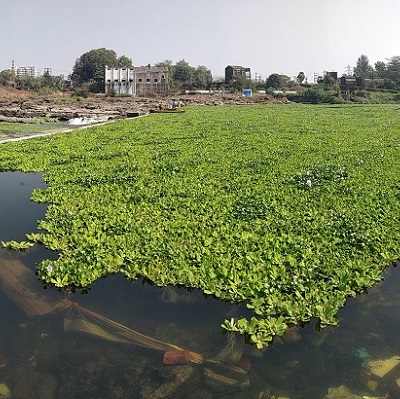Plant Water Hyacinth

What is Water Hyacinth?
Water hyacinth, scientifically known as Eichhornia crassipes, is a floating aquatic plant native to South America but has since become a pervasive issue in water bodies worldwide, including the Indian subcontinent. Often referred to as the "Killer Weed," this plant is notorious for its rapid growth and ability to thrive in various water conditions, making it a significant environmental concern. Despite its aesthetic appeal, characterized by long stems, thick leaves, and striking purple flowers, water hyacinth is a major indicator of water pollution and poses severe ecological and economic challenges.
Problems Caused by Water Hyacinth:
- The plant's dense and thick mats obstruct sunlight from penetrating the water surface, leading to the degradation of natural aquatic ecosystems. This blockage hampers oxygen dissolution, adversely affecting fish and other aquatic life, potentially leading to their demise. Furthermore, water hyacinth contributes to the loss of biodiversity, exacerbating the threat to aquatic ecosystems.
- One of the most alarming aspects of water hyacinth is its high growth rate. Each mother plant can produce 9-12 offshoots, rapidly expanding its presence in water bodies. This characteristic, coupled with its ability to release offspring upon disturbance, renders mechanical removal methods largely ineffective on a global scale.
- In addition to ecological impacts, water hyacinth presents several socio-economic problems. It creates breeding grounds for disease-carrying mosquitoes like those of dengue and malaria, contributes to flooding by obstructing water flow, negatively impacts tourism, and demands extensive maintenance and repair of water sources.
- Given these multifaceted challenges, water hyacinth and Pistia stratiotes, represents a significant environmental threat, misleadingly appearing to purify water while in reality exacerbating pollution and toxicity. Addressing the water hyacinth issue is crucial for preserving aquatic ecosystems, protecting biodiversity, and mitigating its far-reaching impacts on human health and economic activities.